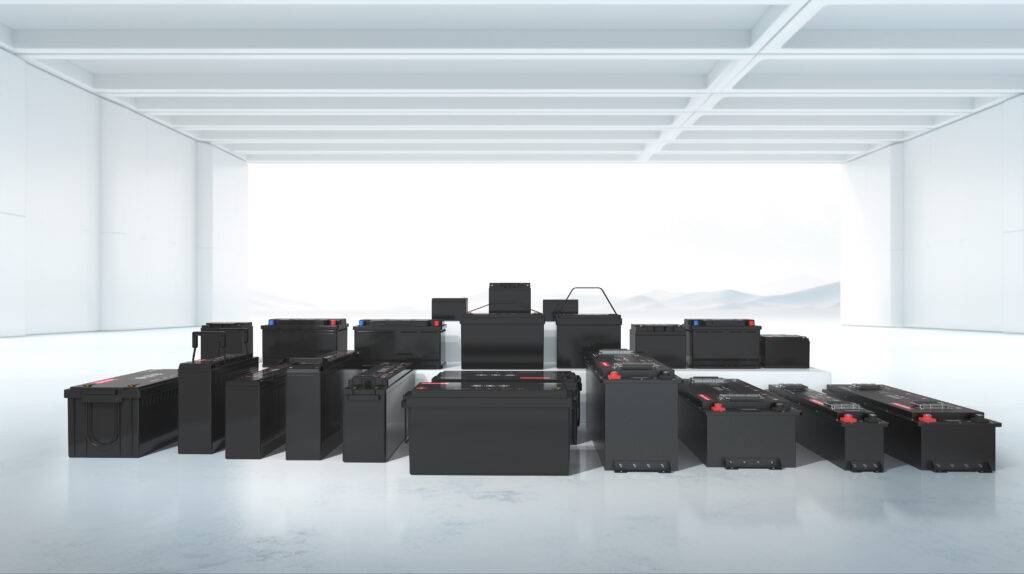Lithium iron phosphate (LiFePO4) batteries are increasingly becoming the preferred choice for electric vehicles (EVs) due to their safety, longevity, and environmental benefits. As automakers and consumers seek reliable and sustainable energy solutions, LiFePO4 technology stands out as a compelling option for modern electric mobility.
What Are Lithium Iron Phosphate Batteries and Their Key Features?
Lithium iron phosphate batteries utilize iron phosphate as the cathode material, offering several distinctive features:
- Safety: LiFePO4 batteries are known for their thermal stability, significantly reducing the risk of fire and explosion compared to other lithium-ion chemistries.
- Longevity: These batteries typically provide a longer lifespan, often exceeding 2000 charge cycles.
- Environmental Impact: LiFePO4 is more environmentally friendly, as it does not contain toxic heavy metals like cobalt or nickel.
Key Features Chart: Characteristics of Lithium Iron Phosphate Batteries
| Feature | Description |
|---|---|
| Chemistry | Lithium iron phosphate |
| Cycle Life | 2000+ cycles |
| Thermal Stability | High |
| Environmental Impact | Non-toxic materials |
Why Are Lithium Iron Phosphate Batteries Becoming the Preferred Choice for Electric Vehicles?
Lithium iron phosphate batteries are gaining traction in the electric vehicle market due to several factors:
- Growing Demand for Safe EVs: As safety concerns rise among consumers, LiFePO4 batteries offer a reliable alternative with enhanced safety features.
- Increasing Adoption of Renewable Energy: The shift towards sustainable energy solutions aligns with the benefits of LiFePO4 technology.
- Cost-Effectiveness: With decreasing production costs and improved performance metrics, LiFePO4 batteries are becoming more economically viable.
These trends indicate a significant shift towards adopting LiFePO4 technology in various sectors.
How Do Lithium Iron Phosphate Batteries Compare to Other Battery Types?
When comparing lithium iron phosphate batteries to other battery technologies, several important factors come into play:
- Energy Density: While LiFePO4 batteries generally have lower energy density compared to lithium nickel manganese cobalt (NMC) or lithium-ion batteries, they excel in safety and longevity.
- Cost: LiFePO4 batteries are often more cost-effective due to lower material costs and longer life cycles.
- Performance: They provide stable performance over a wide temperature range and have a high discharge rate.
Comparison Chart: Key Metrics of Battery Technologies
| Technology | Energy Density (Wh/kg) | Cost ($/kWh) | Cycle Life |
|---|---|---|---|
| Lithium Iron Phosphate | 100-150 | 100-200 | 2000+ |
| NMC | 200-250 | 300-500 | 1000-1500 |
| NCA | 200-250 | 300-600 | 1000-1500 |
What Advantages Make Lithium Iron Phosphate Batteries Ideal for Electric Vehicles?
Lithium iron phosphate batteries offer several advantages that make them particularly suitable for electric vehicles:
- Enhanced Safety: Their thermal stability minimizes risks associated with overheating and combustion.
- Longer Lifespan: Higher cycle life means less frequent replacements, reducing long-term costs.
- Stable Performance: They maintain consistent performance across various temperatures, making them reliable in diverse conditions.
These benefits make LiFePO4 batteries an attractive option for both manufacturers and consumers in the EV market.
Advantages Chart: Benefits of Using LiFePO4 in EVs
| Advantage | Description |
|---|---|
| Safety | Reduced risk of fire and thermal runaway |
| Longevity | Extended battery life with over 2000 cycles |
| Cost Efficiency | Lower replacement frequency reduces costs |
What Challenges Must Be Addressed for Lithium Iron Phosphate Battery Adoption?
Despite their advantages, lithium iron phosphate batteries face several challenges:
- Lower Energy Density: Compared to other lithium-ion technologies, LiFePO4 batteries may not provide the same range per charge.
- Market Competition: The growing number of battery technologies creates intense competition among manufacturers.
- Supply Chain Issues: Securing raw materials necessary for production can be challenging due to geopolitical factors and market fluctuations.
Addressing these challenges is crucial for maintaining competitiveness in the evolving battery market.
How Is the Market for Lithium Iron Phosphate Batteries Expected to Grow?
The market for lithium iron phosphate batteries is projected to experience significant growth due to:
- Increased Demand from EV Manufacturers: As electric vehicle sales surge globally, demand for reliable battery technologies like LiFePO4 will continue to rise.
- Government Support: Policies promoting clean energy solutions are driving research and development in battery technologies.
- Technological Advancements: Innovations aimed at improving energy density and reducing costs will enhance the appeal of LiFePO4 batteries.
Market analysts predict robust growth in the lithium iron phosphate sector over the next decade.
Industrial News
Recent developments indicate that lithium iron phosphate battery manufacturers are experiencing significant growth as demand surges from electric vehicle markets and renewable energy sectors. Companies like CATL and BYD are expanding their production capabilities to meet this rising demand while focusing on enhancing battery performance and reducing costs. This trend highlights a broader shift towards sustainable energy solutions globally.
Redway Expert Insights
“Lithium iron phosphate batteries represent a pivotal advancement in energy storage technology,” states Dr. Emily Carter, an expert in battery innovation. “Their combination of safety, longevity, and environmental friendliness makes them essential as we transition towards greener energy solutions.”
FAQ Section
Q1: What are lithium iron phosphate (LiFePO4) batteries?
A1: Lithium iron phosphate batteries use iron phosphate as a cathode material, known for their safety, longevity, and environmental benefits.Q2: Why choose LiFePO4 batteries for electric vehicles?
A2: They offer enhanced safety features, longer lifespan, stable performance across temperatures, and cost-effectiveness compared to traditional lithium-ion options.Q3: What challenges do LiFePO4 batteries face?
A3: Key challenges include lower energy density compared to other technologies, intense market competition, and supply chain issues related to raw materials.




